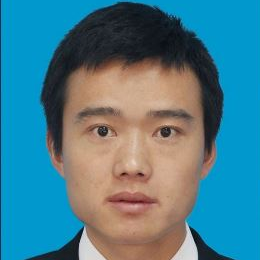Organic-Inorganic Hybrids: Synthesis, Property and Application
A special issue of Crystals (ISSN 2073-4352). This special issue belongs to the section "Hybrid and Composite Crystalline Materials".
Deadline for manuscript submissions: closed (20 March 2022) | Viewed by 19206
Special Issue Editors
Interests: organic–inorganic hybrids materials; functional crystaline materials; coatings; luminescent materials; phosphors
Special Issues, Collections and Topics in MDPI journals
Interests: computational materials science; graphene; stress corrosion cracking
Interests: organic–inorganic hybrids; perovskite materials; low-dimensional perovskites; organic semiconductors; perovskite solar cells; light-emitting diodes
Special Issues, Collections and Topics in MDPI journals
Special Issue Information
Dear Colleagues,
Over the past several decades, crystalline organic-inorganic hybrid materials, composed of standalone inorganic and organic moieties or modules blended at the atomic or molecular scale, have been extensively explored. Incorporating of both inorganic and organic components in a single crystal lattice, these materials have versatile structures and interesting/unique properties; thus, they are both fundamentally and technologically important. In the resulting hybrid structures, the integration of the inorganic modules and organic ligands combines the superiority of the excellent electronic, optical, magnetic, thermal, and mechanical properties of the inorganic compounds and the superior structural flexibility, lightweight, processability, and functionality of organic molecules with greatly enhanced structural, chemical and physical properties.
This Special Issue covers the recent development of solid-state inorganic and inorganic–organic hybrid materials that possess interesting and unique properties potentially useful for clean and renewable energy applications, including but not limited to photovoltaics, solid-state lighting, thermoelectrics, gas storage, capture and separation, catalysis and chemical sensing. The design, synthesis, characterization, functionalization, and optimization of these material families are discussed. Both experimental and theoretical methods to investigate and understand the structure–property correlations in these systems, as well as the organic-inorganic interface interactions at the atomic and molecular level, are introduced.
Prof. Wei Liu
Prof. Xin Wu
Prof. Haoran Lin
Guest Editors
Manuscript Submission Information
Manuscripts should be submitted online at www.mdpi.com by registering and logging in to this website. Once you are registered, click here to go to the submission form. Manuscripts can be submitted until the deadline. All submissions that pass pre-check are peer-reviewed. Accepted papers will be published continuously in the journal (as soon as accepted) and will be listed together on the special issue website. Research articles, review articles as well as short communications are invited. For planned papers, a title and short abstract (about 100 words) can be sent to the Editorial Office for announcement on this website.
Submitted manuscripts should not have been published previously, nor be under consideration for publication elsewhere (except conference proceedings papers). All manuscripts are thoroughly refereed through a single-blind peer-review process. A guide for authors and other relevant information for submission of manuscripts is available on the Instructions for Authors page. Crystals is an international peer-reviewed open access monthly journal published by MDPI.
Please visit the Instructions for Authors page before submitting a manuscript. The Article Processing Charge (APC) for publication in this open access journal is 2600 CHF (Swiss Francs). Submitted papers should be well formatted and use good English. Authors may use MDPI's English editing service prior to publication or during author revisions.
Keywords
- Organic-inorganic hybrids
- luminescence
- catalysis
- photovoltaic
- chemical sensing
- structure-property correlations







